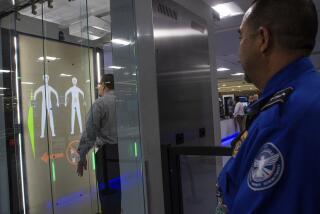High-tech travel shortcuts
Imagine feeling in control when you fly instead of feeling like a powerless pawn. Or picture yourself avoiding the hotel’s crowded front desk by checking into your hotel using your smart phone. Or envision yourself finding a parking space — a parking space! — on the first try.
That’s a little of what technology brings to the travel party. Looking ahead, here are some examples of the ways it has transformed (and will continue to change) your life.
Air travel
It’s not unusual to get a call or a text announcing that your flight is delayed. But Air Canada’s iPhone app takes the next step by offering you a new itinerary. After you confirm the new itinerary, you can check in using your iPhone and get a boarding pass for your new flights.
Qantas has embedded its loyalty cards with an RFID (radio frequency identification) chip that helps customers zip through the airports in Perth and Sydney. Here’s how it works: A customer scans his card at a check-in reader; he drops his bag at a nearby kiosk for automatic tagging — the chip knows where he’s going. Then he’s off to the gate.
On Virgin, the in-flight entertainment system will, in the future, know your food and fun preferences (which you’ve provided to the airline, perhaps through its Elevate program). If you love Lady Gaga, macadamia nuts and “The Mechanic” (the original), they’ll be waiting for you.
Hotels
Travelers may love technology, but having to acquaint themselves with new systems and processes at each hotel can be frustrating. Hotels may save themselves the expense of installing complicated electronics that operate the TV, drapes, lighting and so on and shift the operations to a device they do know: the guest’s iPad or similar device. Intelity’s ICE (Interactive Customer Experience) software, for instance, allows a guest at the plaza hotel in Manhattan to use an in-room iPad to dim the lights or raise the thermostat without fumbling around with the hotel room’s control panel. “Guest services are converted to the ICE interface, so you can adjust the temp, order room service, request a wakeup call, etc., using the hotel’s iPad,” says David Adelson, Intelity’s chief executive. “With the Plaza’s iPhone app [on your phone], you could order lunch while strolling in Central Park,” says Adelson, and have it waiting for you in your room when you return.
Near Field Communication chips, or NFC, can transform a smart phone into a smart wallet for purchases, a hotel room key, etc. Google, Rim and Nokia have promised smart phones with these chips by 2012. With such tools, you could wave your phone in front of a hotel room door to make it open.
Or, for example, let’s say you’d like the room at 78 and dim light. The hotel room’s sensors will detect your preferences from signals its NFC chip emits. “You can magically walk around and the world interacts to give you what your want,” says Mike Ozburn of Booz Allen Hamilton, a technology consulting firm.
Assa Abloy Mobile Keys is testing smart phones with NFC chips at a Clarion Hotel in Stockholm. If this works as a YouTube video says it will, you e-mail the hotel, get your electronic room key in response, then head for the hotel. Once there, you bypass the front desk and head for the room, where the door unlocks with a prompt from the phone. (https://www.youtube.com/watch?v=YqeCNEvs4Xg
That’s been going on for more than a decade in Japan, where smart phones have enabled Japanese consumers to hold their phones up to a secure receiver to pay for groceries, clothes, etc.
Several Aloft hotels are testing Smart Check-In by sending special Starwood Preferred Guest cards to guests who have an embedded RFID. (Starwood is testing the technology in anticipation of NFC smart phones.) “When the hotel receives the reservation for an arriving guest [with the special card], the hotel immediately registers the guest in the hotel and sends a text message to the customer with their room number,” says Brian McGuinness, senior vice president of Specialty Select Brands (Aloft, Element, etc.). “Simultaneously, the hotel also sends to the door locking mechanism the unique identifier of the arrival guest. This allows the customer to bypass the desk and immediately go to their room.”
Navigating
Now that GPS systems routinely tell us how to get where we’re going and smart phone apps tell us what to do when we get there, the only puzzle that remains is where to park. Ton Steenman, vice president of embedded and communications for Intel estimates that a third of the traffic in San Francisco is drivers seeking parking spots. “Imagine the amount of traffic removed by a smart-parking system with sensors or cameras to find parking,” he said. Sensors along a street would share info within the Internet cloud and when a parking spot is detected near you, directions would be sent to your car or your smart phone telling you to turn right for a parking spot 300 feet ahead on your right.
In the Munich airport’s indoor parking garage, all of the spots have sensors and lighted arrows point the way to a parking spot.
More to Read
Sign up for The Wild
We’ll help you find the best places to hike, bike and run, as well as the perfect silent spots for meditation and yoga.
You may occasionally receive promotional content from the Los Angeles Times.






